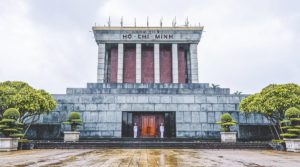Exploring the museums in Vietnam offers a fascinating glimpse into the country’s rich history, diverse cultures, and artistic heritage. Whether you are a history buff, an art lover, or simply curious about Vietnam’s past, these museums provide an enriching experience.
Overview of the best museums in Vietnam
Choosing the right museum to visit can be challenging, given the multitude of options available. To help you out, we’ve created an overview of the best museums in Vietnam, including their locations, types, and what you can expect to see.
| Name Museum | Location | Type of Museum (Category) | Short Description |
|---|---|---|---|
| War Remnants Museum | Ho Chi Minh City | War History | Exhibits on the Vietnam War, including photographs, military equipment, and personal stories. |
| Vietnam Museum of Ethnology | Hanoi | Ethnology | Displays the cultural diversity of Vietnam’s 54 ethnic groups through artifacts, videos, and traditional houses. |
| Vietnamese Women’s Museum | Hanoi | Cultural/History | Highlights the roles and contributions of Vietnamese women throughout history and culture. |
| Ho Chi Minh Museum | Hanoi | Historical/Biographical | Dedicated to the life and legacy of Ho Chi Minh, featuring artifacts, photographs, and documents. |
| Vietnam Military History Museum | Hanoi | Military History | Covers Vietnam’s military history from ancient times to the present, including weaponry and dioramas. |
| Da Nang Museum of Cham Sculpture | Da Nang | Archaeology/Cultural | Houses the world’s largest collection of Cham sculpture, showcasing the ancient Champa civilization. |
| Vietnam National Museum of History | Hanoi | History/Archaeology | Chronicles Vietnam’s history from prehistoric times to the present, with artifacts, documents, and displays. |
| Vietnam Fine Arts Museum | Hanoi | Art | Features traditional and contemporary Vietnamese art, including paintings, sculptures, and ceramics. |
| National Oceanographic Museum of Vietnam | Nha Trang | Natural History/Marine Biology | Displays marine life, including specimens, aquariums, and exhibits on oceanographic research. |
| Quang Ninh Museum | Ha Long | Cultural/History | Covers the natural history, culture, and history of Quang Ninh Province, including coal mining exhibits. |
| Hoa Lo Prison Museum | Hanoi | Historical | Former prison used by French colonists and later by North Vietnam, known as the “Hanoi Hilton” during the Vietnam War. |
| Museum of Traditional Vietnamese Medicine | Ho Chi Minh City | Medical/History | Explores the history and practice of traditional Vietnamese medicine, including herbal remedies and acupuncture. |
| Ho Chi Minh City Museum of Fine Arts | Ho Chi Minh City | Art | Exhibits Vietnamese art from various periods, including contemporary and traditional works. |
| Con Dao Museum | Con Dao | War History | Chronicles the history of Con Dao Island, including its role as a penal colony, and offers a glimpse into the lives of political prisoners. |
| Museum of Sa Huynh Culture | Quang Ngai | Archaeology/Cultural | Showcases artifacts from the Sa Huynh culture, an ancient civilization known for its burial customs and pottery. |
Best museums in Vietnam
1. War Remnants Museum (Ho Chi Minh City)
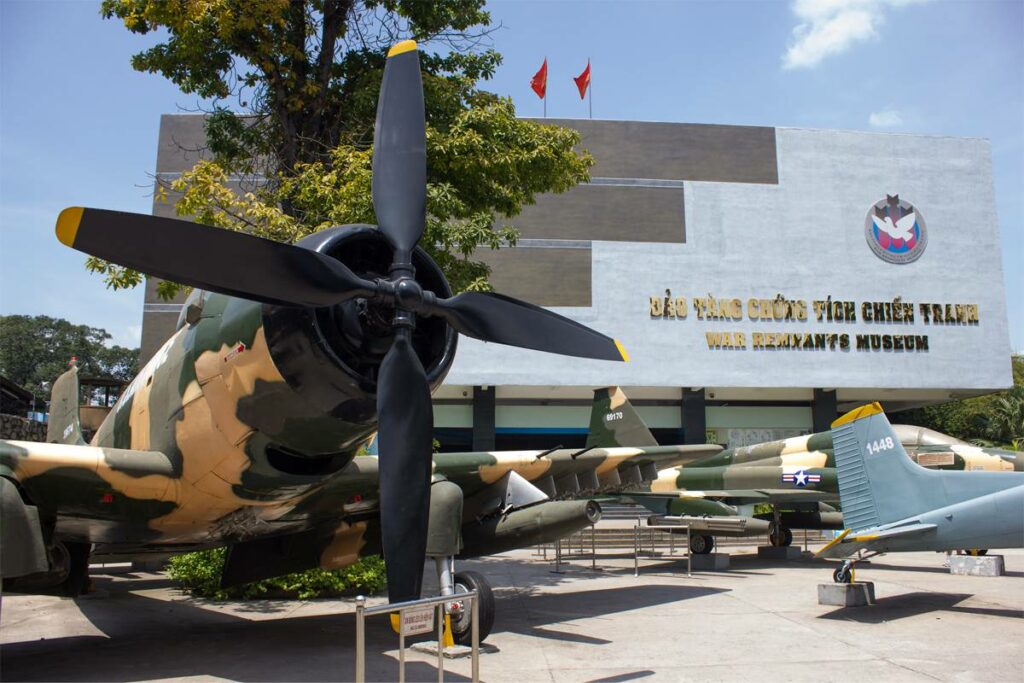
The War Remnants Museum in Ho Chi Minh City stands as a poignant testament to the devastating impact of the Vietnam War. Through a collection of photographs, artifacts, military equipment, and personal accounts, the museum paints a vivid picture of the human cost of conflict. Visitors can explore exhibits that document the atrocities committed during the war, the resilience of the Vietnamese people, and the ongoing efforts towards reconciliation and healing. The museum’s powerful displays offer a sobering yet essential perspective on Vietnam’s history, reminding us of the importance of peace and understanding.
For a more comprehensive understanding of the Vietnam War, consider combining your visit to the War Remnants Museum with a trip to the Cu Chi Tunnels, an extensive network of underground tunnels used by the Viet Cong during the war. The Reunification Palace, formerly the Independence Palace, is another significant landmark that offers insights into the political and military events of the war.
2. Vietnam Museum of Ethnology (Hanoi)

The Vietnam Museum of Ethnology in Hanoi is a captivating celebration of the country’s rich cultural diversity. This museum showcases the unique traditions, customs, and lifestyles of Vietnam’s 54 ethnic groups through a vast collection of artifacts, photographs, and interactive displays. The outdoor exhibits, featuring full-scale replicas of traditional houses and communal spaces, provide a hands-on experience of Vietnam’s diverse cultural heritage.
A visit to the Museum of Ethnology is an excellent way to gain a deeper understanding of the various ethnic groups you may encounter during your travels in Vietnam, particularly in regions like Sapa, Ha Giang, and the Central Highlands. By learning about their customs and traditions beforehand, you can approach these communities with greater respect and appreciation for their unique way of life.
3. Vietnamese Women’s Museum (Hanoi)
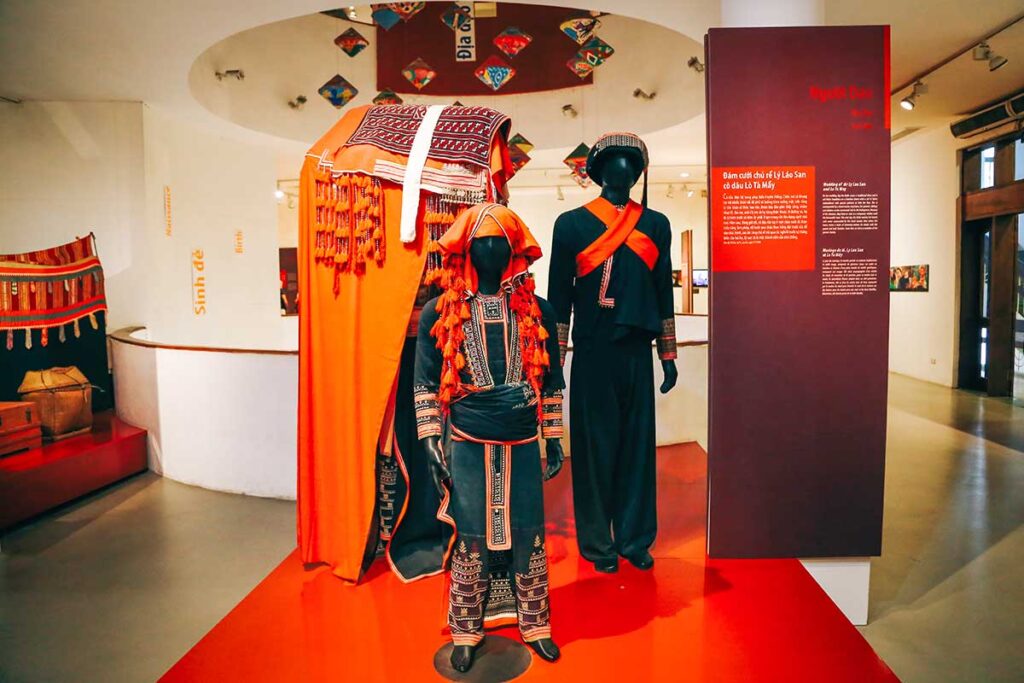
The Vietnamese Women’s Museum in Hanoi pays tribute to the strength, resilience, and contributions of Vietnamese women throughout history. The museum’s exhibits explore the multifaceted roles women have played in Vietnamese society, from their involvement in wartime struggles to their achievements in the arts, sciences, and everyday life. Through personal stories, photographs, and artifacts, the museum highlights the pivotal role of women in shaping Vietnam’s past, present, and future.
This museum offers a unique and empowering perspective on Vietnamese history and culture, challenging stereotypes and celebrating the achievements of women. It’s a must-visit for anyone interested in understanding the complex and inspiring stories of Vietnamese women.
4. Ho Chi Minh Museum (Hanoi)
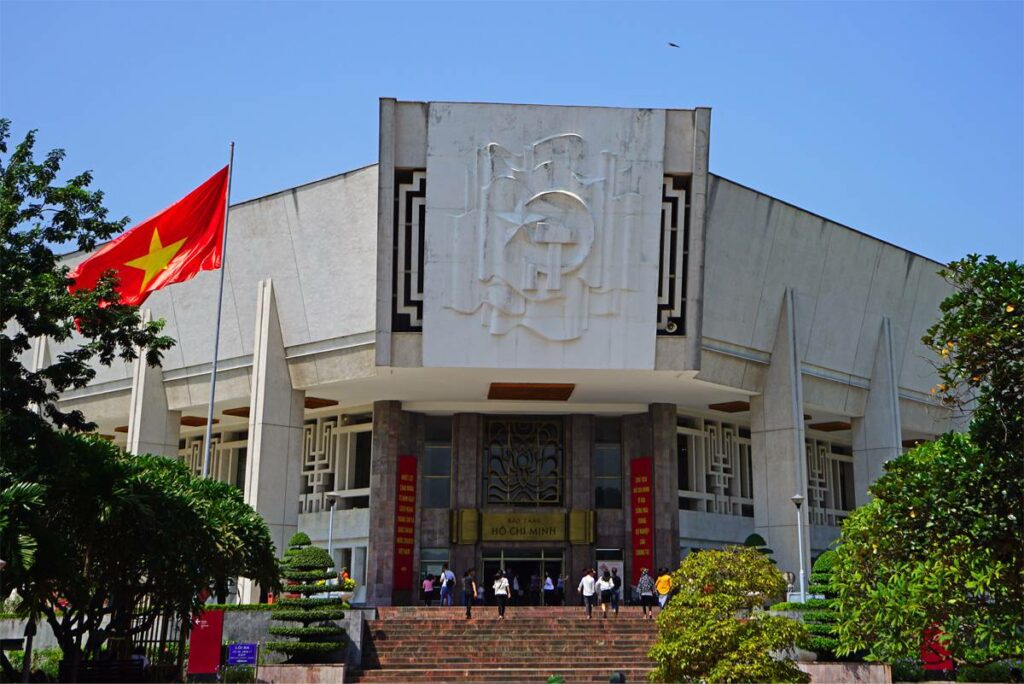
Located in the heart of Hanoi, the Ho Chi Minh Museum is dedicated to the life and legacy of Ho Chi Minh, Vietnam’s revered revolutionary leader. The museum chronicles his extraordinary journey from a young nationalist to the architect of Vietnam’s independence. Through photographs, personal belongings, and historical documents, visitors can gain insights into Ho Chi Minh’s vision, leadership, and enduring impact on the nation.
After visiting the museum, take a short walk to Ba Dinh Square, where you can pay your respects at the Ho Chi Minh Mausoleum, the final resting place of the beloved leader. The imposing granite structure and surrounding gardens offer a solemn and reflective atmosphere.
5. Vietnam Military History Museum (Hanoi)
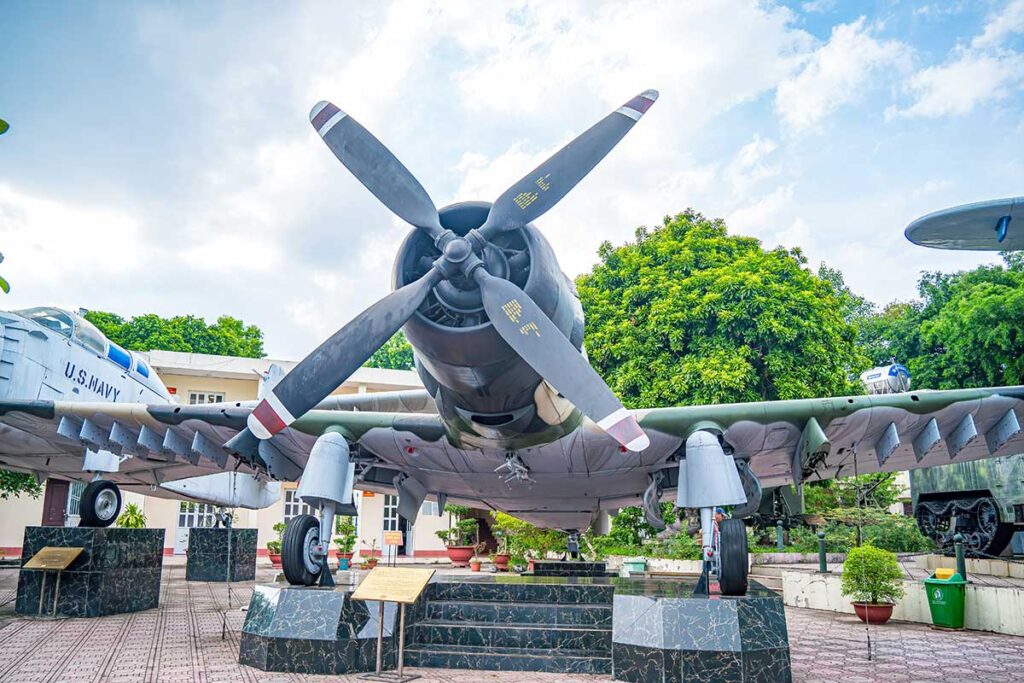
The Vietnam Military History Museum in Hanoi provides a comprehensive overview of Vietnam’s military history, spanning from ancient times to the present day. The museum’s extensive collection includes weapons, uniforms, vehicles, and other artifacts that showcase the country’s long and often turbulent struggle for independence and reunification.
For those interested in delving deeper into Vietnam’s military past, consider combining your visit to the museum with a trip to the nearby Imperial Citadel of Thang Long. This UNESCO World Heritage Site offers a glimpse into the country’s ancient military history, with its well-preserved fortifications and underground bunkers. The Vietnam Fine Arts Museum, located adjacent to the Military History Museum, is also worth exploring for its collection of Vietnamese art from various periods.
6. Da Nang Museum of Cham Sculpture (Da Nang)
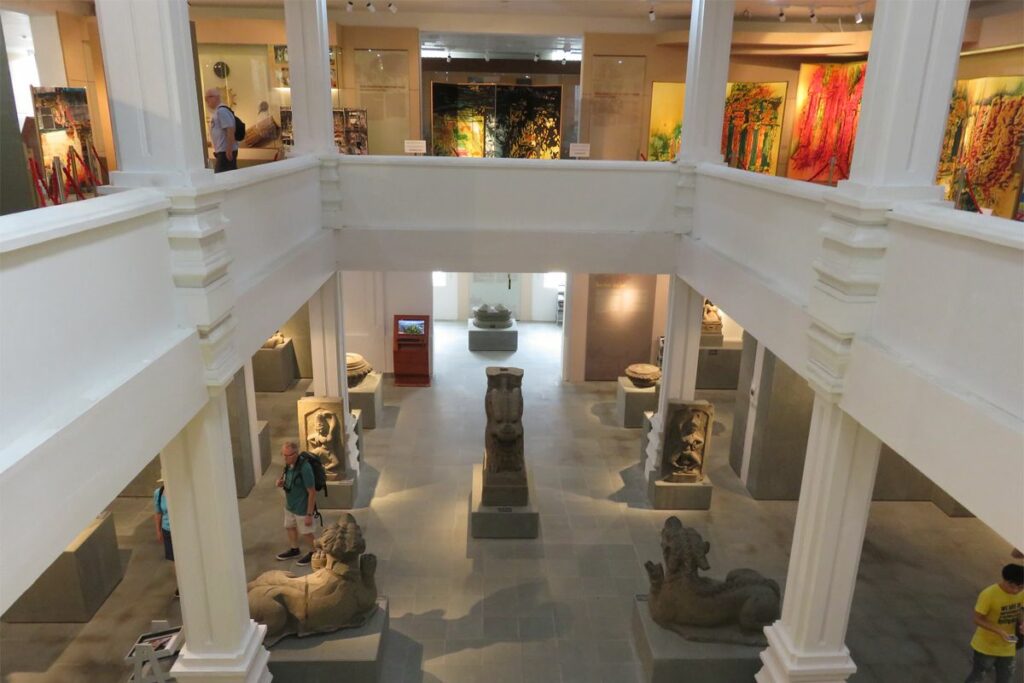
The Da Nang Museum of Cham Sculpture houses the world’s largest and most significant collection of Cham art and artifacts. This museum showcases the unique cultural heritage of the Cham people, an ancient civilization that thrived in central Vietnam from the 2nd to the 15th centuries. The collection includes intricate sculptures, bas-reliefs, and other objects that depict the Cham people’s religious beliefs, artistic expressions, and daily life.
To further explore the Cham culture, consider visiting My Son Sanctuary, a UNESCO World Heritage Site located about 70 kilometers from Da Nang. This ancient complex of Hindu temples, built between the 4th and 14th centuries, offers a fascinating glimpse into the Cham people’s architectural and artistic achievements.
7. Vietnam National Museum of History (Hanoi)
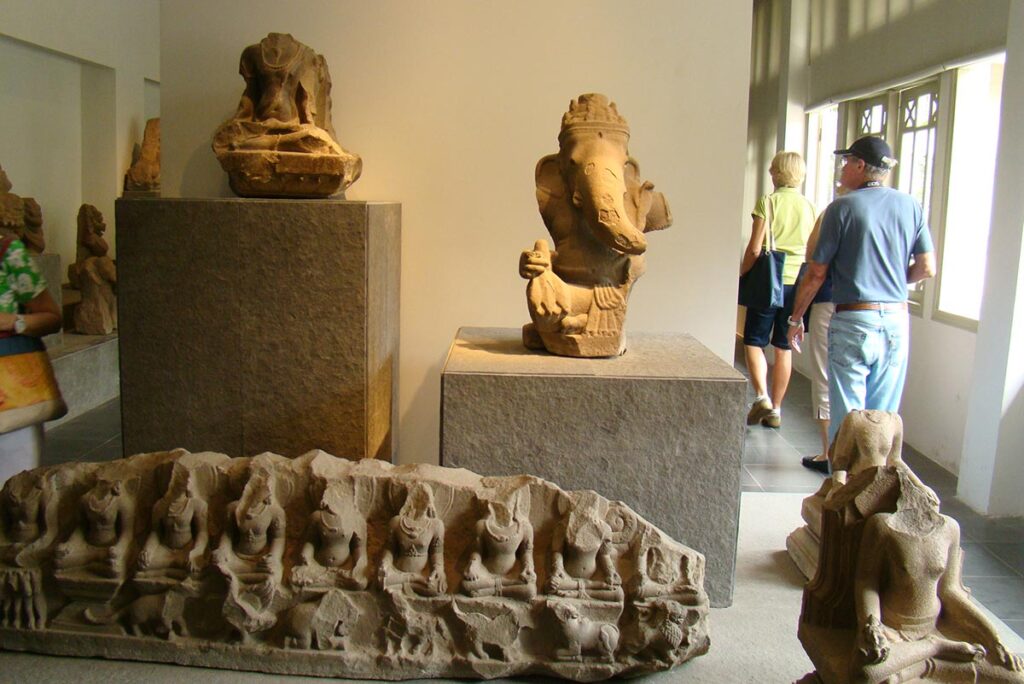
The Vietnam National Museum of History in Hanoi offers a comprehensive journey through the country’s past, spanning from prehistoric times to the modern era. The museum’s vast collection includes artifacts, sculptures, ceramics, and other objects that illustrate Vietnam’s rich cultural heritage and historical development. Visitors can trace the evolution of Vietnamese civilization, from ancient kingdoms to colonial struggles and the fight for independence.
The museum’s exhibits provide a valuable context for understanding Vietnam’s present-day culture and society. To further explore the country’s historical landmarks, consider visiting the nearby Imperial Citadel of Thang Long or the Temple of Literature, both of which offer insights into Vietnam’s rich past.
8. Vietnam Fine Arts Museum (Hanoi)
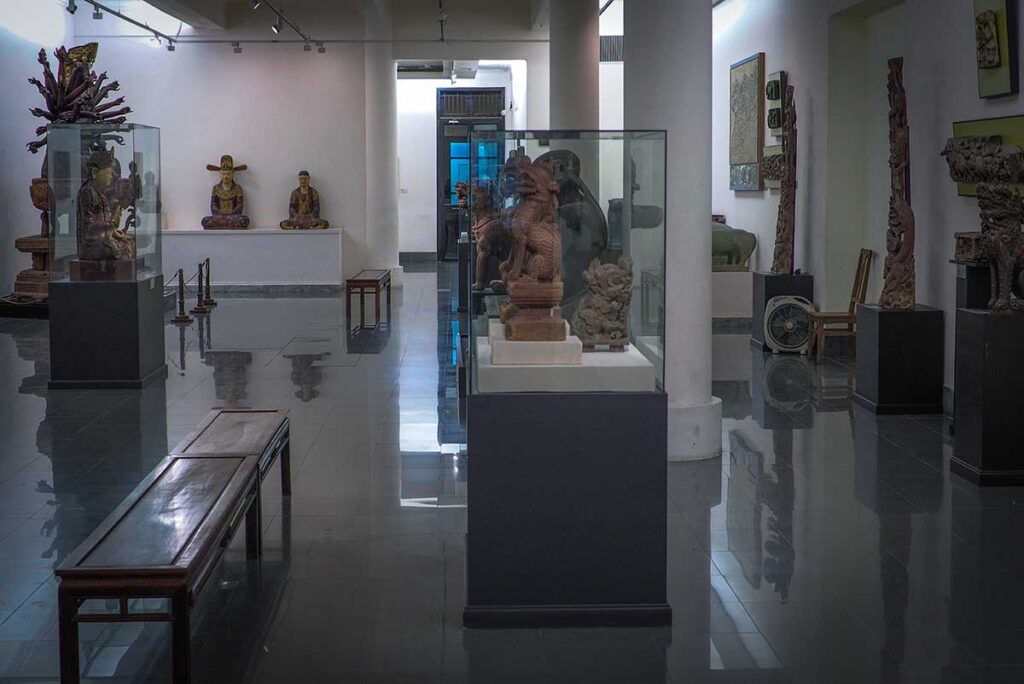
The Vietnam Fine Arts Museum in Hanoi showcases the evolution of Vietnamese art from ancient times to the contemporary era. The museum’s collection includes paintings, sculptures, lacquerware, and other forms of artistic expression, reflecting the diverse influences that have shaped Vietnamese art throughout history. Visitors can admire the intricate details of traditional silk paintings, the vibrant colors of lacquerware, and the innovative creations of contemporary artists.
For those interested in exploring Hanoi’s artistic scene further, consider visiting the nearby Hanoi Ceramic Mosaic Mural, a kilometer-long artwork depicting scenes of Vietnamese history and culture. The city also boasts numerous art galleries and studios showcasing the works of local and international artists.
9. National Oceanographic Museum of Vietnam (Nha Trang)
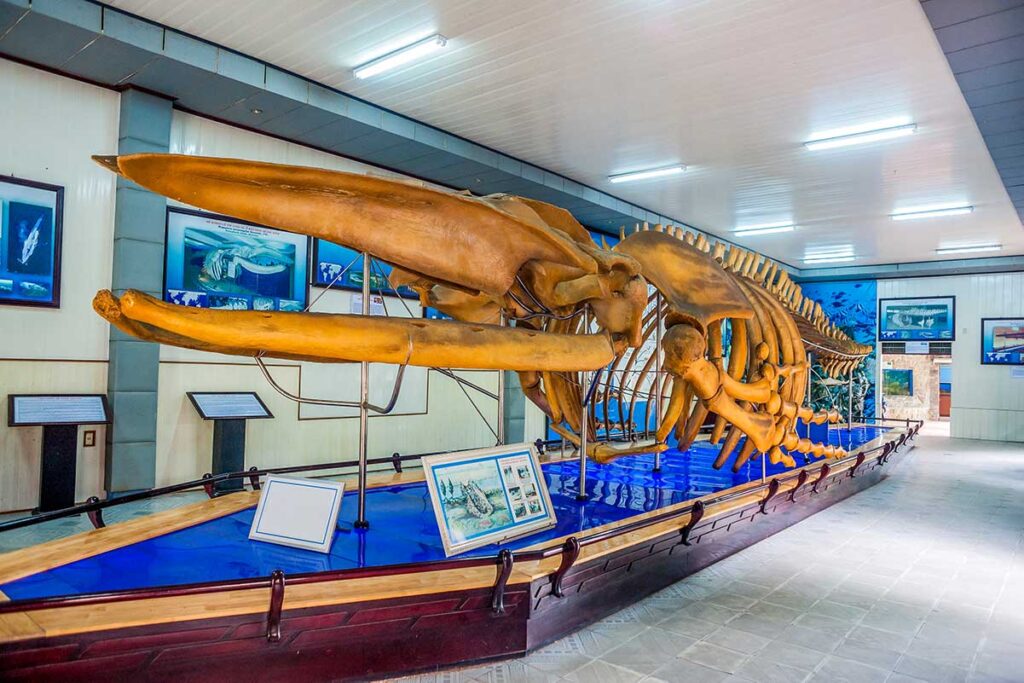
Located in Nha Trang, the National Oceanographic Museum of Vietnam is a fascinating institution dedicated to marine biodiversity and oceanographic research. The museum’s exhibits showcase a wide array of marine life, from colorful coral reefs and tropical fish to sea turtles and sharks. Visitors can also learn about Vietnam’s diverse coastal ecosystems, the importance of marine conservation, and the latest scientific discoveries in oceanography.
Nha Trang’s beautiful beaches and vibrant underwater world make it an ideal destination for those interested in marine life. Consider combining your visit to the museum with a snorkeling or diving trip to experience the wonders of the coral reefs firsthand.
10. Quang Ninh Museum (Halong City)

The Quang Ninh Museum in Ha Long City showcases the history, culture, and natural wonders of Quang Ninh province, including the iconic Halong Bay. The museum’s exhibits highlight the region’s geological formations, diverse ecosystems, and rich cultural heritage. Visitors can learn about the history of coal mining in the area, the unique traditions of the local ethnic minority groups, and the efforts to preserve Halong Bay’s natural beauty.
After visiting the museum, embark on a cruise or kayaking adventure in Halong Bay to experience its stunning landscapes firsthand. The museum’s exhibits provide a valuable context for understanding the bay’s geological formations and the delicate balance of its ecosystem.
11. Hoa Lo Prison Museum (Hanoi)
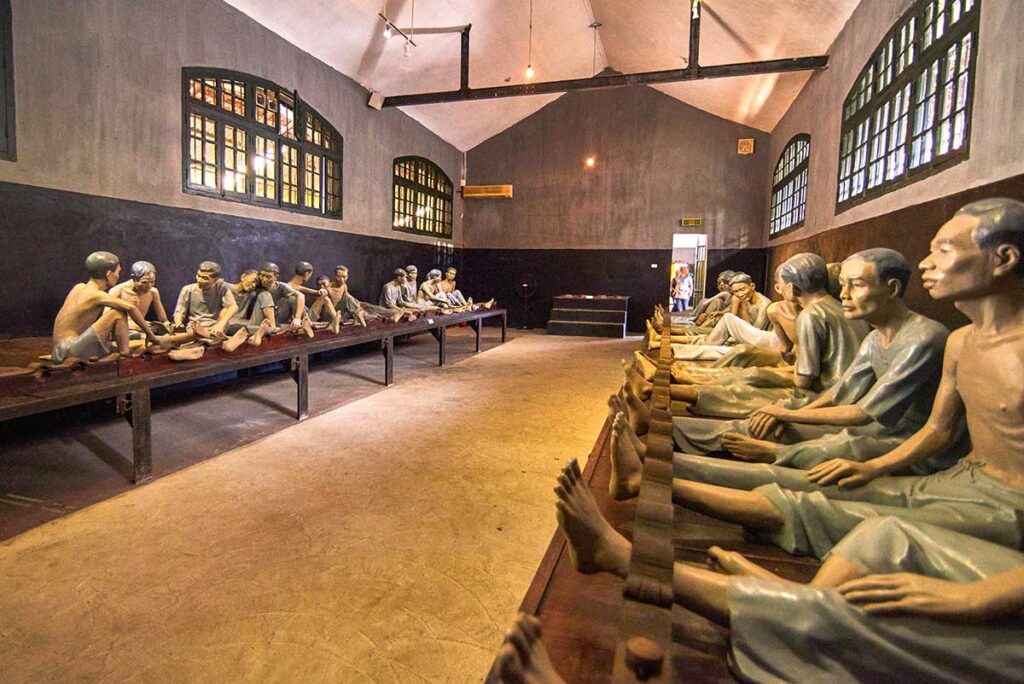
The Hoa Lo Prison Museum, located in Hanoi, offers a poignant glimpse into Vietnam’s turbulent past. Once known as the “Hanoi Hilton” during the Vietnam War, this former prison now serves as a museum, showcasing the harsh realities faced by prisoners of war, political dissidents, and revolutionaries throughout its history. The exhibits include photographs, artifacts, and personal accounts that shed light on the resilience and courage of those who were incarcerated within its walls.
While the museum can be emotionally challenging, it provides a valuable perspective on Vietnam’s struggle for independence and the sacrifices made by countless individuals.
12. Museum of Traditional Vietnamese Medicine (FITO) (Ho Chi Minh City)
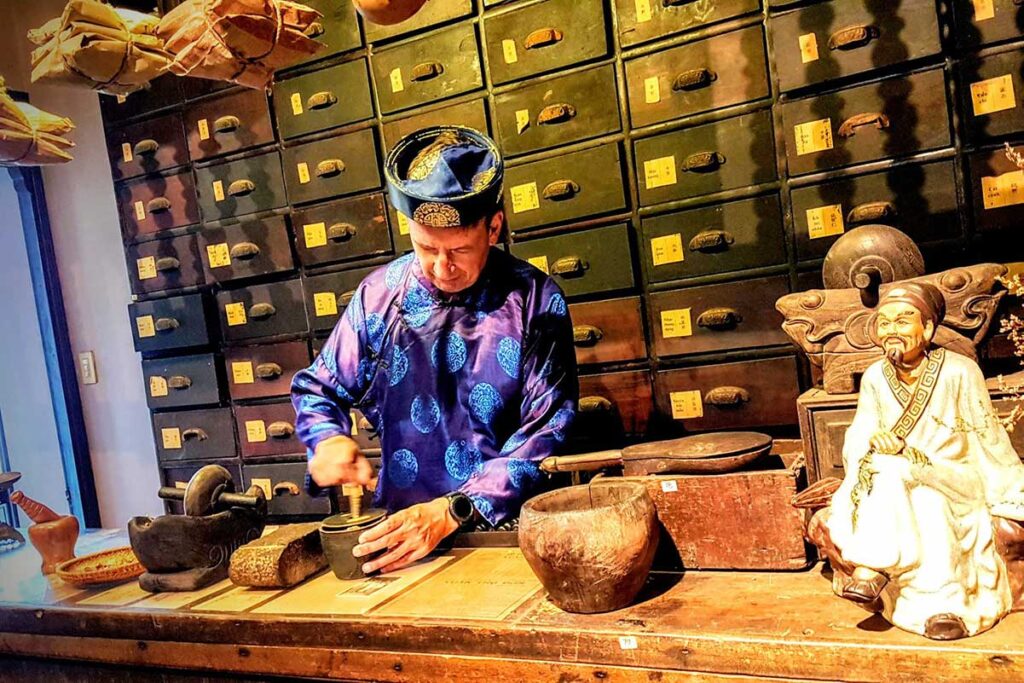
The Museum of Traditional Vietnamese Medicine, also known as the FITO Museum, in Ho Chi Minh City is a fascinating exploration of Vietnam’s rich heritage of herbal remedies and healing practices. Housed in a beautifully restored French colonial villa, the museum’s exhibits showcase a vast collection of medicinal plants, herbs, and traditional remedies, as well as tools and equipment used in traditional Vietnamese medicine. Visitors can learn about the history and philosophy behind these practices, and even witness demonstrations of traditional healing techniques.
This museum offers a unique insight into Vietnam’s holistic approach to health and wellness, highlighting the importance of natural remedies and their connection to the country’s rich biodiversity. To further explore the world of traditional Vietnamese medicine, consider visiting a local herbalist or attending a workshop on herbal remedies.
13. Ho Chi Minh City Museum of Fine Arts (Ho Chi Minh City)
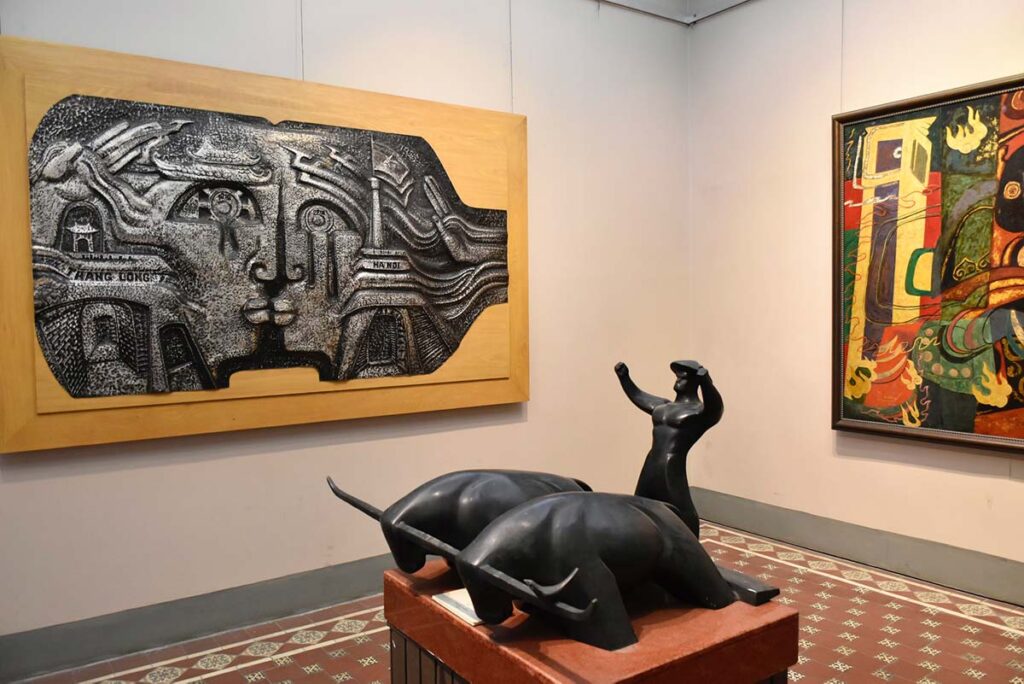
The Ho Chi Minh City Museum of Fine Arts is a treasure trove of Vietnamese and international art, housed in a beautiful colonial-era building. The museum’s collection spans various periods and styles, including traditional lacquer paintings, silk paintings, sculptures, and contemporary artworks. Visitors can admire the intricate details and vibrant colors of Vietnamese art, as well as discover works by renowned international artists.
To further explore Ho Chi Minh City’s art scene, consider visiting some of the city’s contemporary art galleries or attending an art exhibition or performance.
14. Con Dao Museum (Con Dao)
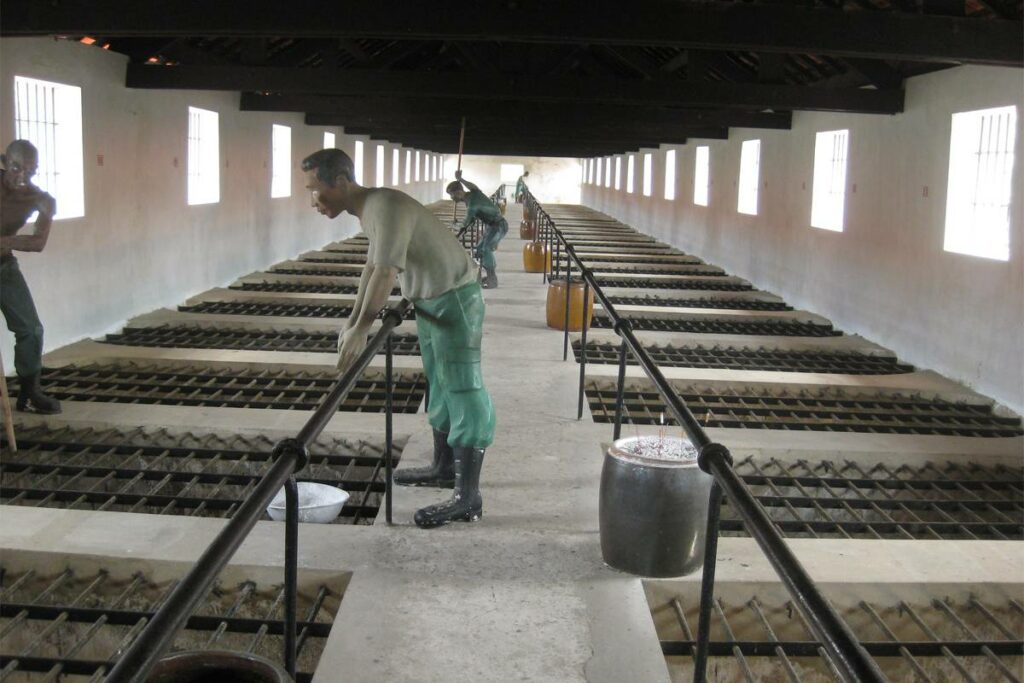
The Con Dao Museum, located in the heart of Con Dao Island, provides a comprehensive insight into the island’s rich and often turbulent history. The exhibits showcase a vast collection of artifacts, photographs, and documents that chronicle the island’s journey from a remote outpost to a notorious penal colony and, eventually, a sought-after tourist destination. Visitors can delve into the stories of political prisoners and revolutionaries who were incarcerated in the infamous Con Dao Prison, known as the “hell on earth” during the French colonial era and the Vietnam War.
Con Dao Prison, technically a separate attraction but often visited in conjunction with the museum, offers a sobering reminder of Vietnam’s past. Visitors can walk through the prison’s chilling corridors, see the cramped cells and “tiger cages” where prisoners were held, and learn about the resilience and courage of those who fought for independence and freedom.
15. Museum of Sa Huynh Culture (Hoi An)
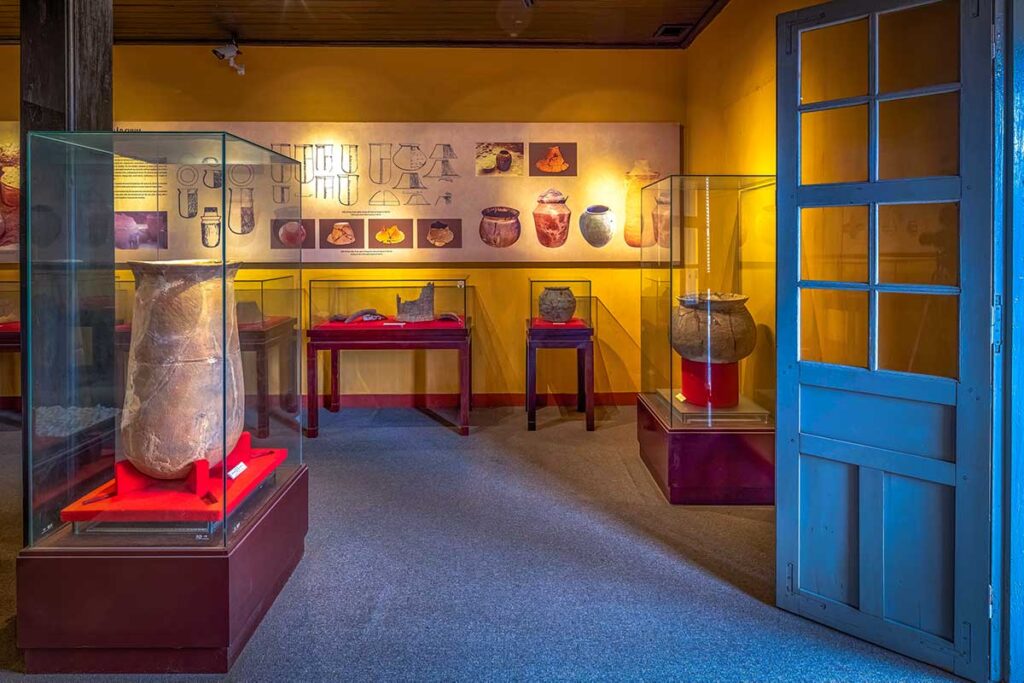
The Museum of Sa Huynh Culture in Quang Ngai province is dedicated to preserving and showcasing the archaeological discoveries of the ancient Sa Huynh culture, which thrived in central and southern Vietnam from around 1000 BC to the 2nd century AD. The museum’s collection includes pottery, jewelry, tools, and other artifacts that provide insights into the Sa Huynh people’s way of life, their beliefs, and their artistic expressions.
This museum offers a unique opportunity to learn about one of Vietnam’s earliest civilizations and its significant contributions to the country’s cultural heritage. For those interested in exploring the archaeological sites of the Sa Huynh culture, consider visiting the nearby Sa Huynh archaeological site, where excavations have unearthed numerous artifacts and remnants of ancient settlements.
